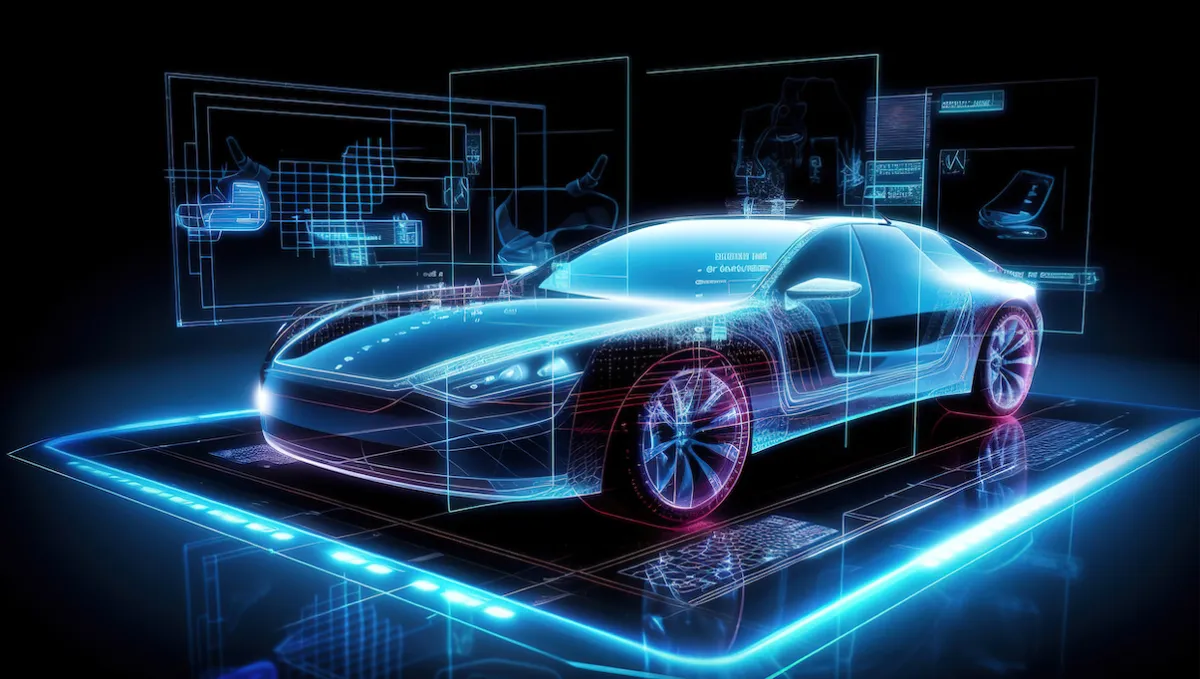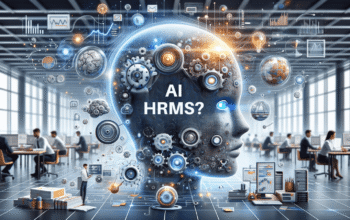As we move into a new era of automotive technology, one thing is clear: software defined vehicles are the next frontier in automotive innovation. Gone are the days of mechanical engines and manual controls – now, cars are being powered by sophisticated software systems that can revolutionise the way we drive. In this blog post, we will explore how these cutting-edge technologies are reshaping the future of transportation and what it means for drivers everywhere. So buckle up and get ready to witness the exciting evolution of software defined vehicles!
Introduction to Software Defined Vehicles
The automotive industry is constantly evolving, with new technologies and innovations being introduced every day. One of the latest advancements in this field is software defined vehicles (SDVs). These vehicles are equipped with advanced software that allows for greater control, customization, and connectivity.
At its core, SDVs use a combination of hardware and software systems to control various aspects of a vehicle’s functionality. This includes everything from engine performance to driver assistance features. Unlike traditional vehicles that have fixed functions, SDVs can be reprogrammed and updated remotely through over-the-air updates.
One of the main benefits of SDVs is their ability to adapt and evolve over time. With the rapid pace of technological advancements, traditional vehicles can quickly become outdated. However, with SDVs, manufacturers can continuously update and add new features to keep up with consumer demands.
Another advantage of SDVs is their increased level of connectivity. These vehicles are equipped with sensors that collect data in real-time, allowing for better monitoring and analysis. This not only improves safety but also provides valuable insights for manufacturers to improve their products.
Moreover, SDVs open up a world of possibilities for customization. With traditional vehicles, consumers have limited options when it comes to personalising their driving experience. However, with SDVs, individuals can tailor various settings such as seat positions, climate control preferences, and entertainment choices according to their liking.
Furthermore, the use of advanced software also enables SDVs to communicate with each other and their surrounding environment. This technology, known as vehicle-to-everything (V2X) communication, allows for improved safety on the road by providing real-time updates on traffic conditions and potential hazards.
However, there are also some challenges that come with SDVs. One of the main concerns is cybersecurity. With increased connectivity comes a higher risk of cyber attacks, which can compromise the safety and functionality of a vehicle.
Another challenge is the cost. The advanced technology used in SDVs can make them more expensive than traditional vehicles. Additionally, not all areas have the necessary infrastructure to support SDVs, such as reliable internet connection for over-the-air updates.
Overall, software defined vehicles have the potential to revolutionise the automotive industry by offering a more customizable, connected, and safe driving experience. While there are still some challenges to overcome, it is an exciting development that will continue to shape the future of transportation.
What is a Software Defined Vehicle?
A software defined vehicle, also known as a SDV, is a revolutionary concept in the automotive industry that is changing the way we think about cars. SDVs are vehicles that rely heavily on software and digital systems to control and operate various aspects of their functionality. This means that instead of relying solely on mechanical or electrical components, these vehicles use advanced software algorithms and computing power to perform tasks such as steering, braking, accelerating, and more.
One of the key defining features of an SDV is its ability to be constantly updated and improved through over-the-air updates. Just like how our smartphones receive regular updates to improve performance and add new features, SDVs can also benefit from this technology. With traditional vehicles, any changes or improvements would require physical modifications or replacements which can be costly and time-consuming. However, with SDVs, these updates can be done remotely without ever leaving your driveway.
Another significant aspect of a software defined vehicle is its increased connectivity with other devices and systems. As technology continues to advance at a rapid pace, more cars are becoming connected through the Internet of Things (IoT). This allows for seamless integration between different devices such as smartphones, smart homes, traffic signals, GPS systems, and more. For instance, imagine being able to control your car’s temperature settings or check your fuel levels from your phone before you even step inside.
SDVs also have advanced safety features thanks to their reliance on software. Through sensors and cameras integrated within the vehicle’s system, they are able to detect potential hazards on the road in real-time. This includes objects like other cars or pedestrians but also includes analysing road conditions for potential dangers such as icy patches or construction zones.
Furthermore, the use of software also allows for customizations and personalization of the vehicle. Drivers can adjust settings such as seat position, steering wheel sensitivity, and more to their liking. Additionally, SDVs have the potential to incorporate advanced features like voice recognition for hands-free operation, augmented reality displays for navigation and information, and even self-driving capabilities.
In summary, a software defined vehicle is a revolutionary type of car that relies heavily on software and digital systems to operate. With its constant ability to be updated and improved, increased connectivity with other devices, advanced safety features, and potential for customization and personalization, SDVs are paving the way for the future of transportation.
How Does it Work?
Software defined vehicles are the next big thing in automotive innovation. But what exactly does this mean and how do these vehicles work? In this section, we will break down the concept of software defined vehicles and explain their functionality in detail.
At its core, a software defined vehicle is an automobile that relies heavily on computer systems and software for its operations. This means that instead of traditional mechanical components controlling various functions of the vehicle, it is controlled by sophisticated software programs. These programs use data from sensors, cameras, and other inputs to make decisions and carry out tasks within the vehicle.
One of the key components of a software defined vehicle is its electronic control unit (ECU). This is essentially a small computer that controls different functions of the vehicle such as engine performance, transmission shifting, braking, steering, and more. Each ECU is responsible for specific tasks and communicates with other ECUs through a network called Controller Area Network (CAN).
The main advantage of having a software defined vehicle is its ability to adapt to changing conditions in real-time. For example, if road conditions suddenly become slippery due to rain or snow, the ECU can adjust the engine’s power output and traction control settings accordingly. This ensures better handling and safety for the driver.
Another important aspect of software defined vehicles is over-the-air updates. Just like our smartphones receive updates to improve performance or add new features, these vehicles can also receive updates wirelessly. This allows manufacturers to continually improve their products without having to physically recall them for any changes or upgrades.
Additionally, with advancements in artificial intelligence (AI), these vehicles are becoming more autonomous than ever before. With advanced sensors and algorithms, they are able to perceive their surroundings and make decisions like human drivers would. This could lead to safer roads as human errors would be minimised.
Software defined vehicles rely on advanced computer systems and programming for their operations. They offer numerous advantages such as adaptability, over-the-air updates, and potential for autonomous driving. As technology continues to advance, we can expect software defined vehicles to become even more prevalent on our roads in the future.
Benefits of Software Defined Vehicles
The emergence of software defined vehicles is set to revolutionise the automotive industry, bringing about a new era of innovation and advancements. These vehicles are equipped with cutting-edge software that allows for enhanced control, connectivity, and safety features. In this section, we will explore the numerous benefits of software defined vehicles in detail.
1) Enhanced Control: One of the biggest advantages of software defined vehicles is the level of control they offer to drivers. Through advanced sensors and algorithms, these cars can analyse road conditions, traffic patterns, and driver behaviour to make real-time adjustments. This enables precise steering, braking, and acceleration for a smoother driving experience.
2) Increased Connectivity: With software defined vehicles, the possibilities for connectivity are virtually limitless. These cars are equipped with high-speed internet connections and have the ability to communicate with other vehicles on the road as well as infrastructure systems such as traffic lights. This not only improves safety but also opens up opportunities for features like predictive maintenance and remote diagnostics.
3) Improved Safety Features: Software defined vehicles come equipped with an array of advanced safety features that make them much safer than traditional cars. For instance, autonomous emergency braking systems use sensors to detect potential collisions and automatically apply brakes to prevent accidents. Lane departure warning systems alert drivers if they drift out of their lane without signalling.
4) Personalised Driving Experience: Thanks to their advanced software capabilities, these cars have the ability to learn from driver behaviour and adapt accordingly. This means that each vehicle can be personalised according to individual preferences such as seat position or music choices. Additionally, it also allows for features like voice commands and gesture controls which enhance convenience while driving.
5) Cost Savings: As these cars rely heavily on software rather than mechanical components for their functioning, they require less maintenance compared to traditional cars. This leads to cost savings for both manufacturers and consumers in terms of repairs and replacements.
6) Eco-Friendly Options: With growing concerns over climate change, many software defined vehicles are designed to be more eco-friendly. By optimising fuel consumption and reducing emissions, these cars contribute towards a greener environment.
The benefits of software defined vehicles go beyond just improved performance and convenience. They have the potential to transform the way we drive and pave the way for a safer, more connected and sustainable future.
Potential Future Developments for Software Defined Vehicles
As technology continues to advance at a rapid pace, the potential for future developments in software defined vehicles is limitless. From enhanced safety features to fully autonomous driving capabilities, there are many exciting possibilities on the horizon for these innovative vehicles.
One of the most anticipated future developments for software defined vehicles is the implementation of artificial intelligence (AI). AI has already made its way into various aspects of our daily lives and it is only a matter of time before it becomes a crucial component in automobiles. With AI, cars will be able to learn from their surroundings and make decisions based on real-time data, making them even safer and more efficient.
Another area of potential development is the integration of advanced sensors and cameras. Currently, software defined vehicles rely heavily on lidar sensors to gather data about their surroundings. However, advancements in sensor technology could lead to the incorporation of additional sensors such as radar or thermal imaging cameras. This would not only improve the accuracy and reliability of the vehicle’s perception systems but also allow for better performance in challenging weather conditions.
In addition to safety enhancements, future developments may also focus on improving user experience and connectivity within software defined vehicles. With the rise of smart homes and connected devices, it’s likely that cars will become an extension of this network. Drivers can expect features such as voice-activated controls, personalised settings based on individual preferences, and seamless integration with smartphones and other devices.
Furthermore, as electric cars become more prevalent, we can expect to see advancements in battery technology that would allow for longer driving ranges and faster charging times. This would make electric software defined vehicles even more practical for everyday use.
One cannot discuss potential future developments without mentioning fully autonomous driving capabilities. While self-driving cars are already being tested on roads today, there is still much room for improvement before they become mainstream. Advancements in AI, sensor technology, and connectivity will all play key roles in achieving this goal.
There is no doubt that software defined vehicles will continue to evolve and drive the automotive industry forward. With advancements in AI, sensors, connectivity, and battery technology, we can expect these vehicles to become even safer, more efficient, and more user-friendly in the near future. The possibilities are endless for this exciting frontier of automotive innovation.
Conclusion
Software defined vehicles are the future of automotive innovation, bringing a whole new level of functionality, safety and convenience to drivers. From advanced driver assistance systems to over-the-air updates, these vehicles will revolutionise the driving experience. As technology continues to evolve at a rapid pace, we can expect even more exciting developments in software defined vehicles. It’s an exciting time for the automotive industry and we can’t wait to see what the future holds!




